PROLOGUE
Miguel de Cervantes' study
Woefully lacking inspiration, the great Spanish writer struggles with every word. Hardship has plagued Cervantes over the latter years, and now most of his property is being moved out and stored away.
His two loyal servants are overseeing the local labourers, who are packing up and carrying off the books from the writer's library. Albeit initially irritated by their presence. Cervantes starts to look closer at the people around him, and takes an interest in the romantic interludes playing out in front of him. His inspiration sparks again, and ideas come to him in abundance. The writer gleefully begins to plot out his next book. His new characters and their personalities soon become clear, and, writing with renewed passion, Cervantes vividly dreams up scenarios and stories where the dramatis personae have an uncanny resemblance to some familiar faces.
ACT I
A Square in Barcelona
The carefree Kitri, daughter of the local innkeeper Lorenzo, is flirting with a young barber named Basilio. However, Basilio's intentions are far more serious than the coy maiden could have assumed. Upon learning that Gamache, the eccentric and wealthy owner of the local bull-fighting arena, has marriage interests in Kitri, he immediately starts making his own wedding plans. Meanwhile, the bull-fighters return from a successful performance, headed by their main talent, the legendary Espada. They immediately gain the full attention of a crowd of adoring women. Mercedes, a young and beautiful lady, is especially interested in Espada. Don Quixote, who has declared himself a wandering knight in constant search of adventure, enters the square with his loyal squire Sancho Panza. For a while, they become the centre of attention of the playful and exuberant crowd. Recognising in Kitri and Basilio the romantic passionate love that he himself has been chasing, Don Quixote takes an immediate liking to the young sweethearts. It is not long before Kitri, Basilio, and their new friends sneak off, while Lorenzo and Gamache are left behind.
ACT II
Scene 1. A Taverna
Barcelona's youth celebrate, joined by Don Quixote and Sancho Panza. Some tension is brought on by the dancing gypsy ladies, but it calms and settles with Basilio and Espada finding mutual respect.
Suddenly, Gamache and Lorenzo catch up with the festive crowd. Aided by the gypsy women, Kitri once again manages to escape her strict parent's grip. Basilio, Don Quixote, and Sancho Panza quickly follow suit.
Scene 2. A Gypsy Camp
Enjoying the welcoming hospitality and the exotic and vibrant atmosphere of the gypsy camp, the young lovers and Don Quixote and Sancho Panza are absorbed and captivated by the very different way of life. But this gathering, too, abruptly comes to an end. Lorenzo manages to catch his daughter and rush her away. Don Quixote is both confused and disappointed by the others' lack of desire to help the young lovers in need. All alone, the sad knight drifts away in visions and dreams.
Scene 3. Don Quixote's Vision
Don Quixote traverses the realm of dreams, guided by Cupid and surrounded by ethereal maidens. The knight realises that actions are needed to change fate for the better. As he awakens, Sancho hands him an invitation to Kitri and Gamache's wedding. Determined to help, Don Quixote sets off to do his duty, to speak up and save both the rightful love of Kitri and Basilio and his own honour.
ACT III
A Square in Barcelona
Kitri and Gamache's wedding ceremony is well under way when Basilio bursts in and interrupts it. Right in front of the wedding guests, the young man commits what looks like suicide. Weighed by little to no guilt, Lorenzo is forced to do the right thing by the hand of Don Quixote, and succumbs to the pressure. He blesses Kitri and her beloved, reasoning that Basilio is already dead anyway. Now blessed, Basilio jumps to his feet, alive and well. Lorenzo believes that he has performed a miracle. Utterly delighted by his new-found powers, the innkeeper permits his daughter to wed Basilio. Festivities resume, and a priest joins the young couple in marriage.
EPILOGUE
We are back in Cervantes' study. Inspired by his friends and new impressions, the writer has finished his book. He has written what is to become one of the most momentous pieces of world literature. His readers will embark on a beautiful journey, full of adventure, of search and discovery, but most importantly of all, of love.
Don Quixote's Study
Bachelor Sanson Carrasco is seen covering a bookcase with wallpaper, while Antonina is putting some rusty old armour and a helmet made of pasteboard into a cupboard. Don Quixote de la Mancha enters, reading a book. He goes to the bookcase and, not finding it, believes it has been stolen by evil magicians. Then he settles into an armchair and continues reading. He delights in stories of brave knights, fabulous giants and other fantastical creatures, but most of all Don Quixote dreams of his beloved Dulcinea, a woman that he believes to be so lovely and noble that she must be divinity. Gradually he nods and falls asleep to dream of their romantic adventures. Darkness falls.
Suddenly his servant, Sancho Panza, climbs hurriedly through the window. In pursuit are several angry women from the market from whom he has stolen bread and a chicken. Awakened by the commotion, Don Quixote sends the women away. Don Quixote tells Sancho that he is determined to seek adventures as a knight-errant, all the while searching for his beloved Dulcinea. He shows him the pasteboard helmet, which, with one sweep from his sword, becomes a shapeless mass on the floor. Antonina suggests that he should use a shaving basin instead, which would make a splendid helmet. Don Quixote enthusiastically agrees and, placing it on his head, orders Sancho to bring him his armour, sword and spear, and to make ready his horse, Rocinante.
Act I
A market-place in Barcelona
Kitri, an inn-keeper's daughter, steals out of her house to meet her beloved, the barber Basilio. Her father, Lorenzo, sees the lovers and sends Basilio away, bringing Kitri to tears. Now comes the rich nobleman Gamache, who, likewise in love with Kitri, goes to Lorenzo and asks for his daughter's hand. The innkeeper accepts with delight but Kitri, appalled at the thought of wedding the foppish nobleman, runs away.
Dancing begins in the square and some toreadors try to kidnap the girls they fancy, but their relatives and lovers hasten to their aid. At this moment Don Quixote arrives mounted on Rocinante, followed by Sancho, who is riding a donkey. At his master's command Sancho sounds his rusted horn, causing the townspeople to cover their ears. Lorenzo runs out of his inn, and Don Quixote, taking him for the lord of a famous castle, dismounts Rocinante and, falling to his knees, begs to be allowed to serve him. Charmed, Lorenzo invites the knight to sit on his balcony. Sancho remains in the square where he is surrounded by girls who induce him to take part in a game of blind man's bluff. Then some boys bring in a blanket on which they place Sancho and proceed to toss him into the air. Don Quixote hurries to his assistance and sets him free.
Peasants gather in the square and dancing resumes. Kitri returns and, noticing her, Don Quixote acclaims her as his Dulcinea, whom evil magicians have reduced to human form. Becoming jealous of her affection for Basilio, Don Quixote attempts to woo her by partnering her in a minuet. Lorenzo berates Kitri for carrying on with Basilio. Kitri and Basilio then run away, and Lorenzo and Gamache follow them. Don Quixote orders Sancho to bring Rocinante, so that he may also set out in pursuit.
Act II
Scene 1 – A camp of gypsies among the windmills outside the village
Kitri, disguised as a boy is seen walking with Harlequin from a troupe of travelling actors. They guess she is a girl and ask her to stay with them.
Scene 2 - The Puppet Theatre
A clown is seen walking with Graziosa, the gypsy chief's daughter. A gypsy tells the chief of the approach of Don Quixote. The chief plans a trick for his benefit and, putting on a mantle crown, sits down as though he were a king on a throne. Don Quixote is deceived and kneels to the chief in homage. The chief bids that he sit beside him and orders a festival to be given in his honor. This begins with Gypsy dances and is followed by a performance of the marionette theatre. Don Quixote is delighted with the entertainment but, mistaking the heroine for his Dulcinea and the marionettes for soldiers attacking her, he rises to assault them. The gypsies are terrified. At this moment the clown and Graziosa run away.
Scene 3 - The Windmills
Flushed with victory, the knight kneels and renders thanks to heaven. Seeing the moon, he takes it for his Dulcinea and tries to get to her. As he approaches the windmills he can see the moon no longer and thinks that evil magicians have hidden his beloved mistress. So, spear in hand, he tilts at the wings of the windmill, which he mistakes for a giant. Alas, the knight is caught by one of the wings and flung into the air. He falls unconscious at Sancho's feet.
Scene 4 – A forest
Through the trees appears Sancho leading Rocinante, upon which sits the wounded Don Quixote. The servant lifts his master down and places him on the grass, so that he may rest. Then, tying up the horse, he goes to sleep. Don Quixote also tries to sleep, but is troubled by fantastic dreams.
Scene 5 – The enchanted Garden of Dulcinea
Fairies appear surrounded by gnomes and Don Quixote finds himself dressed in shining armor. Then comes a succession of fearsome monsters, the last being a gigantic spider, who spins a web. The knight attacks the spider, which he slashes in half with his sword. At that same moment the spider's web vanishes to reveal a beautiful garden, filled with dryads and beautiful women, presided over by the Queen of the Dryads and Amor. Among them is Dulcinea and Don Quixote kneels before his beloved. At this moment everything vanishes.
Act III
The Square
Back at the square, Kitri and Basilio join those who are dancing. At the height of the merriment, Lorenzo and Gamache arrive, followed by Don Quixote and Sancho. Seeing his daughter, Lorenzo decides to give his blessing to her union with the nobleman Gamache. Basilio becomes annoyed and, reproaching Kitri for her unfaithfulness, draws a sword and stabs himself. As he lies dying he begs Lorenzo to unite him with Kitri, but Lorenzo and Gamache refuse. Don Quixote approaches Gamache and challenges him to a duel for having refused a dying man's wish. Gamache declines to fight and the merrymakers drive him out of the inn. Taking pity, Lorenzo agrees to unite Basilio and Kitri. At this moment, Basilio pulls out the sword and tells everyone it was a joke.
Act IV
The Tavern
A magnificent feast is held in honour of Don Quixote. Suddenly the Knight of the Silver Moon challenges him to a duel, which results in the latter being vanquished. The victorious knight proves to be none other than Bachelor Sanson Carrasco, who forces Don Quixote to vow that he will not unsheathe his sword for a whole year. The sorrowful knight, true to his vow, takes up his warlike gear and, followed by Sancho, sets out for home.


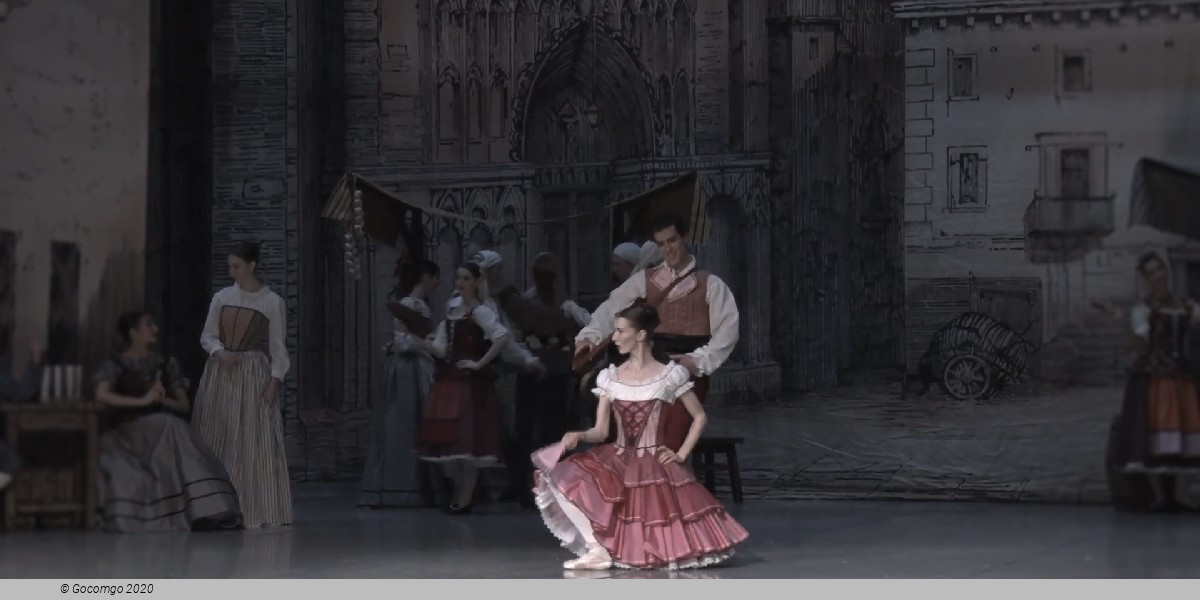
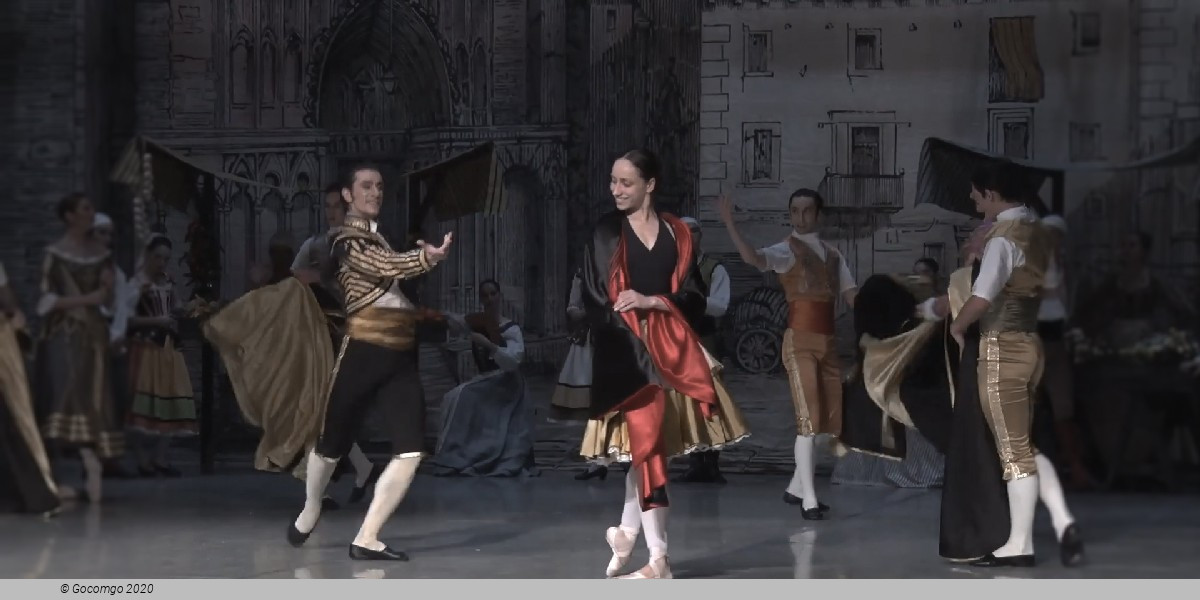
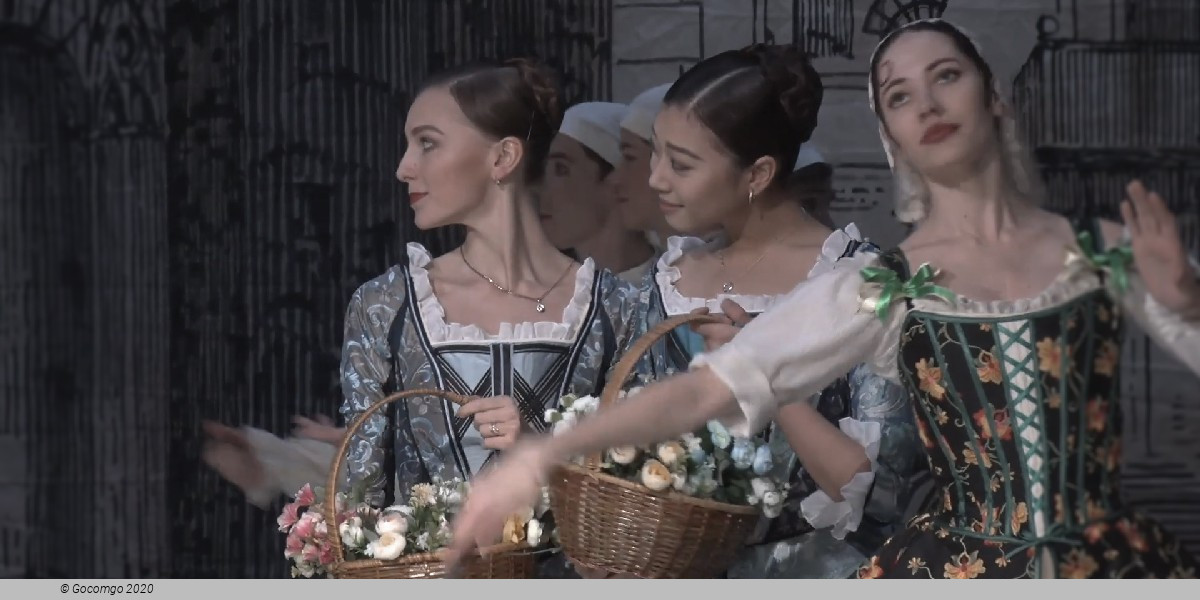
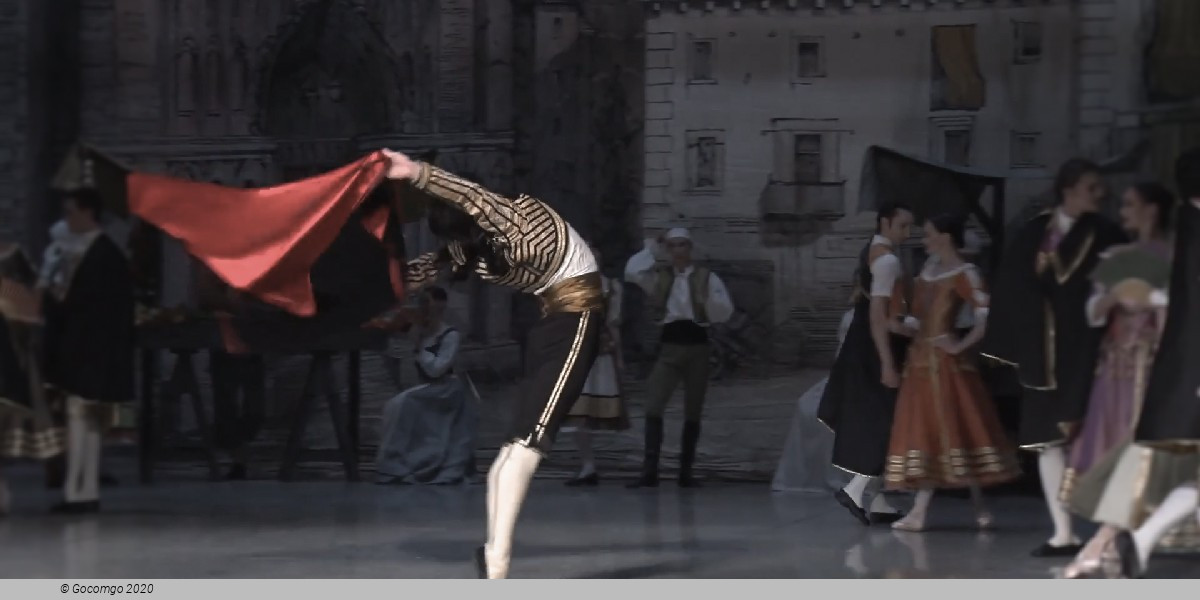
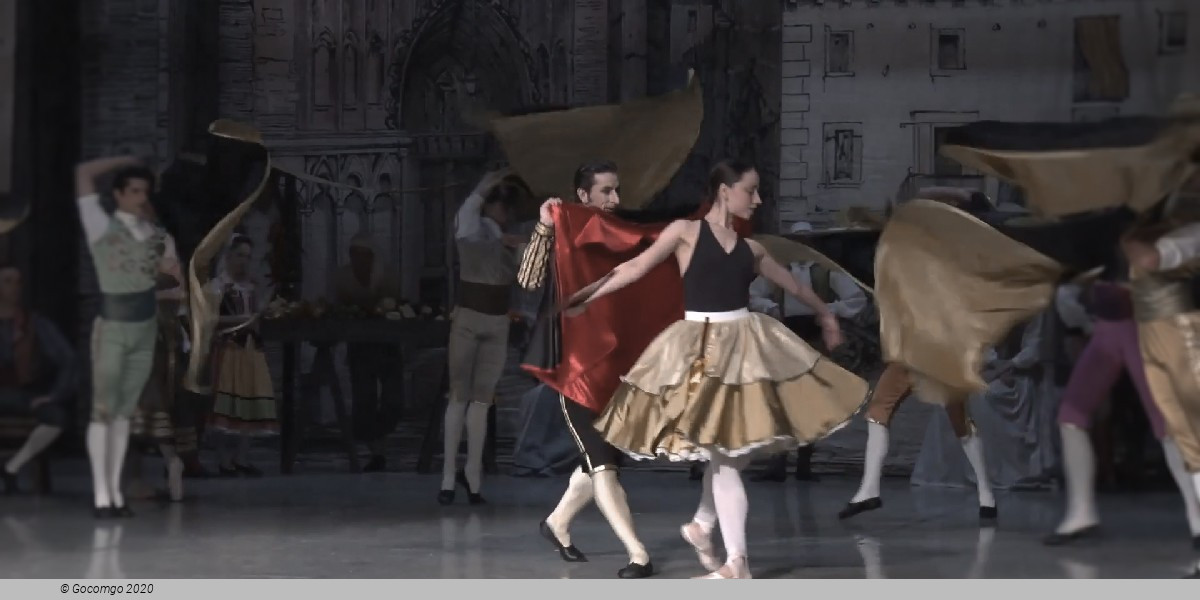
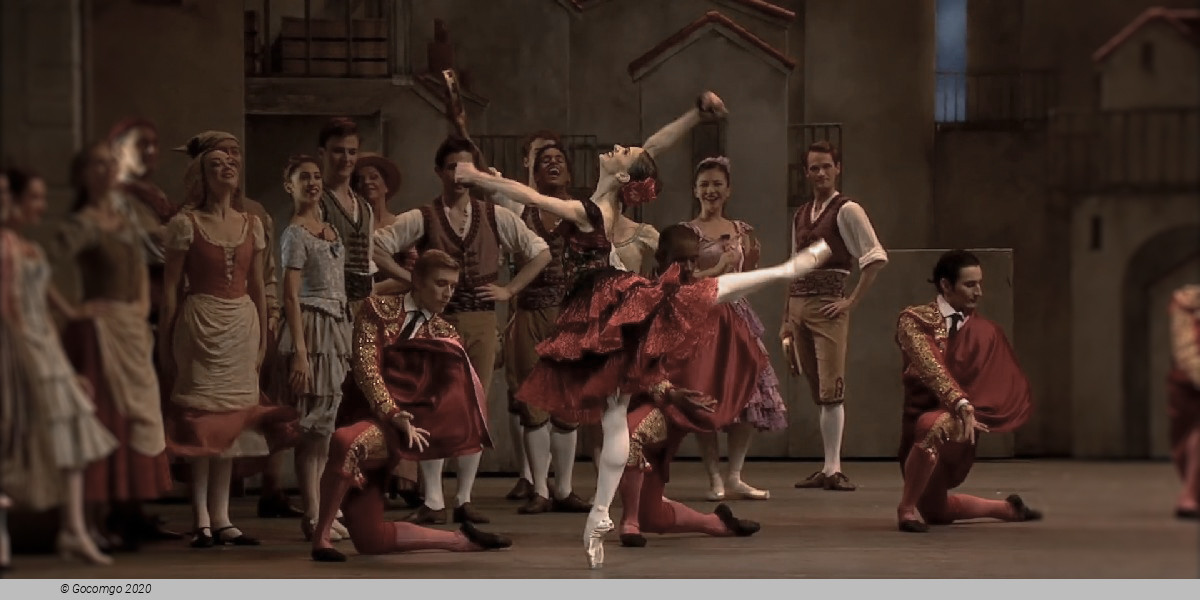
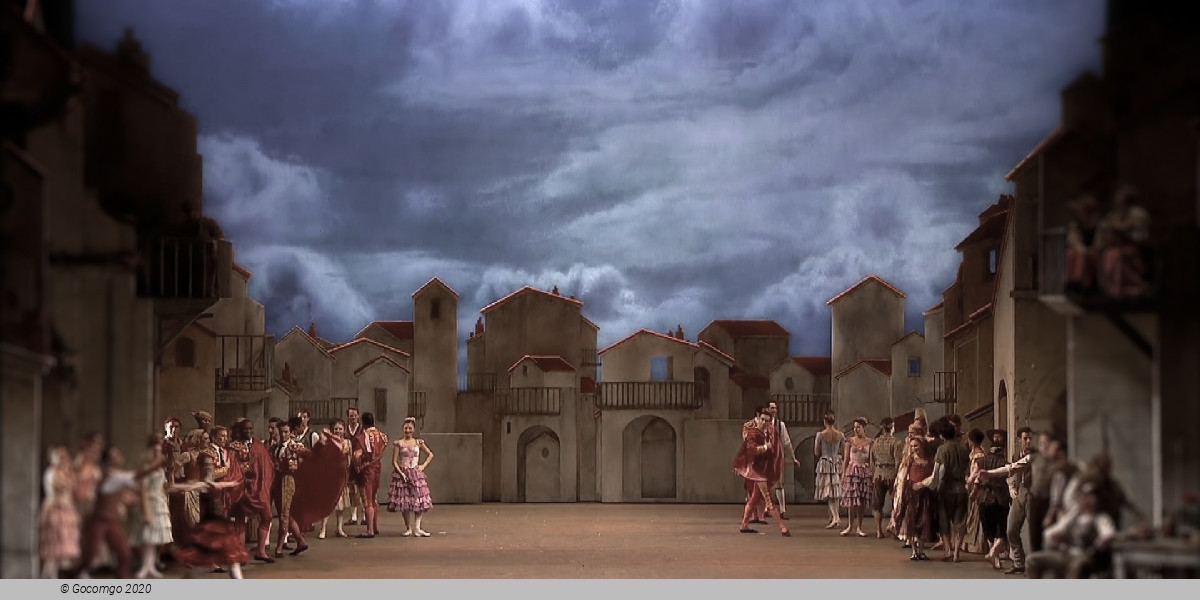
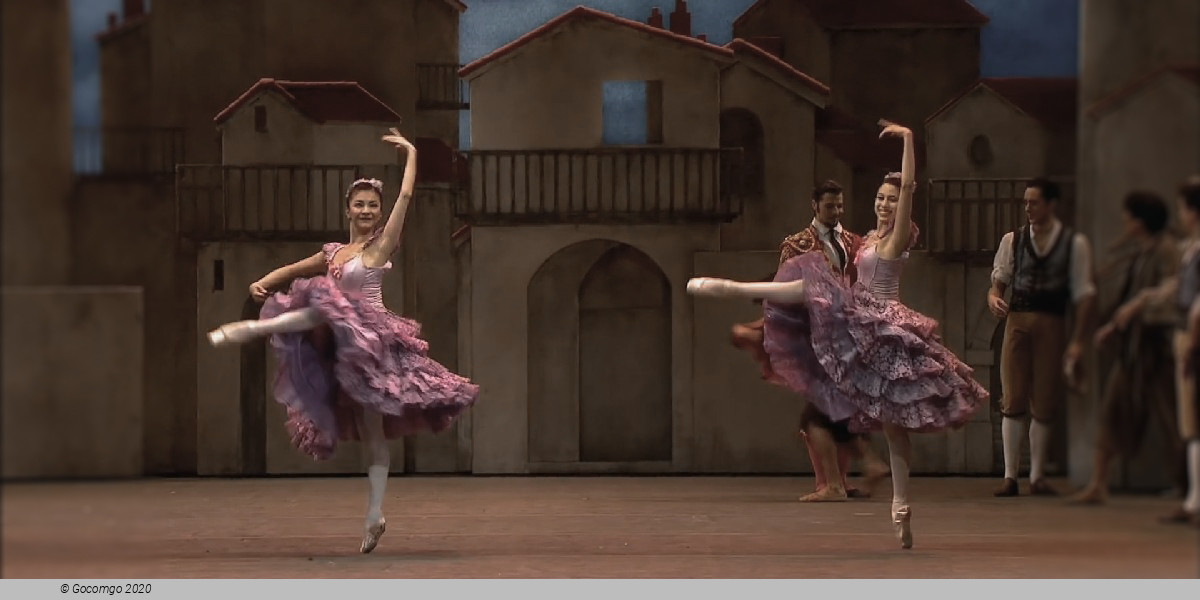

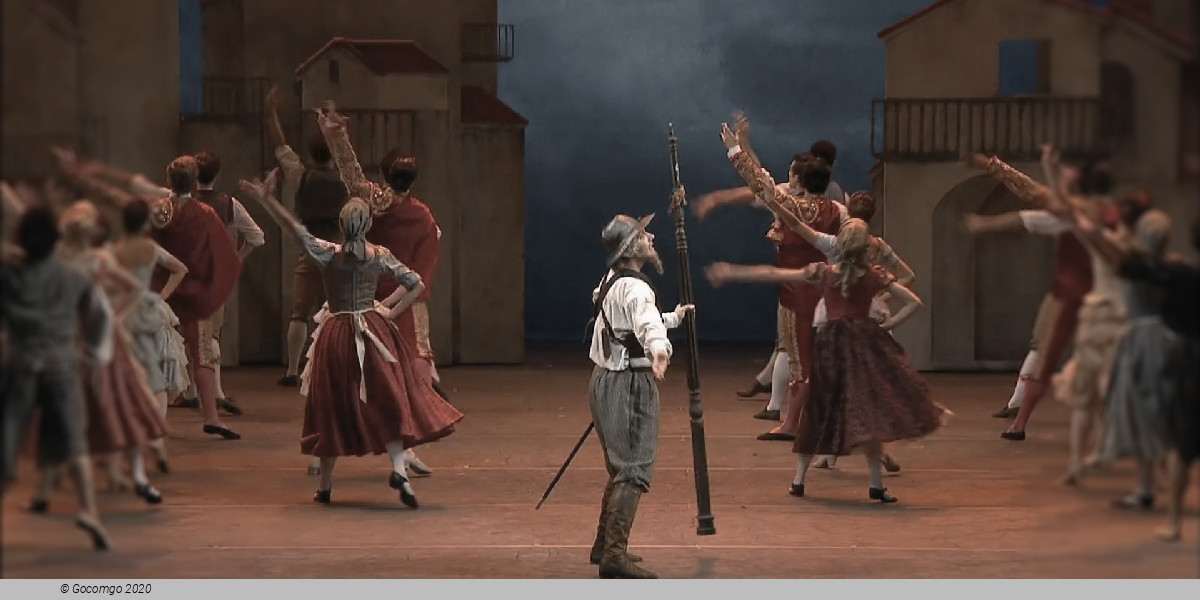
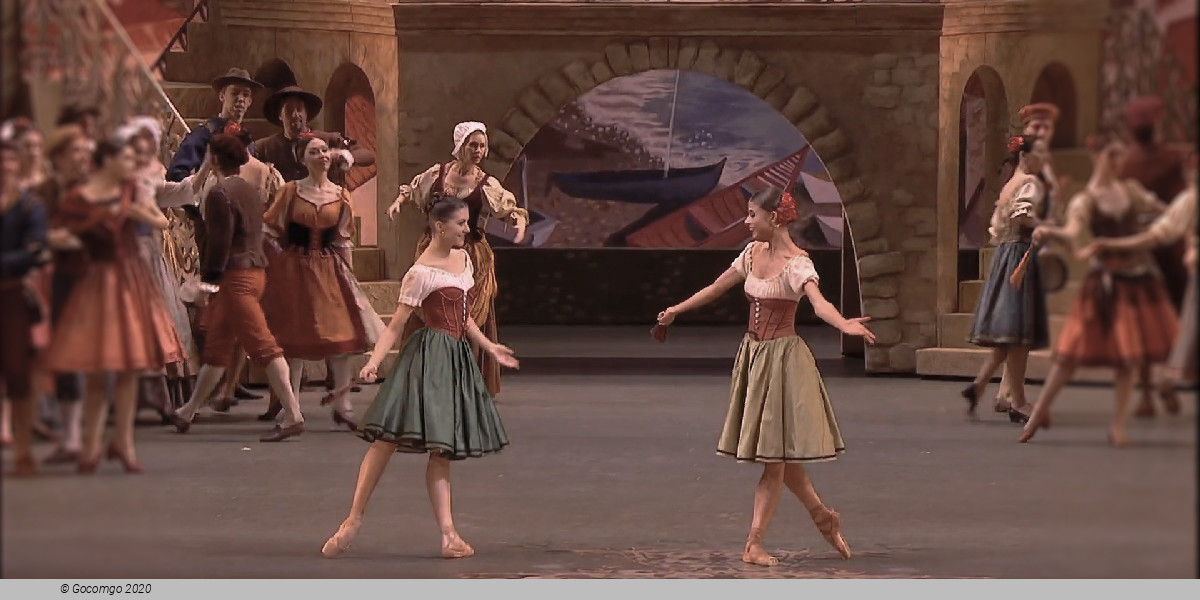
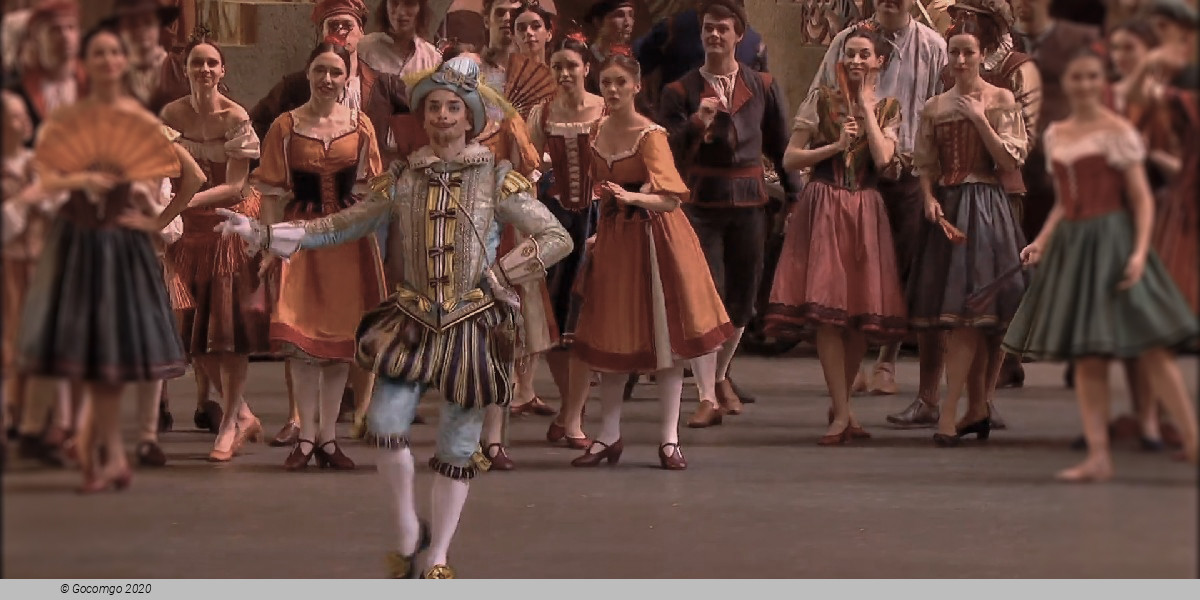
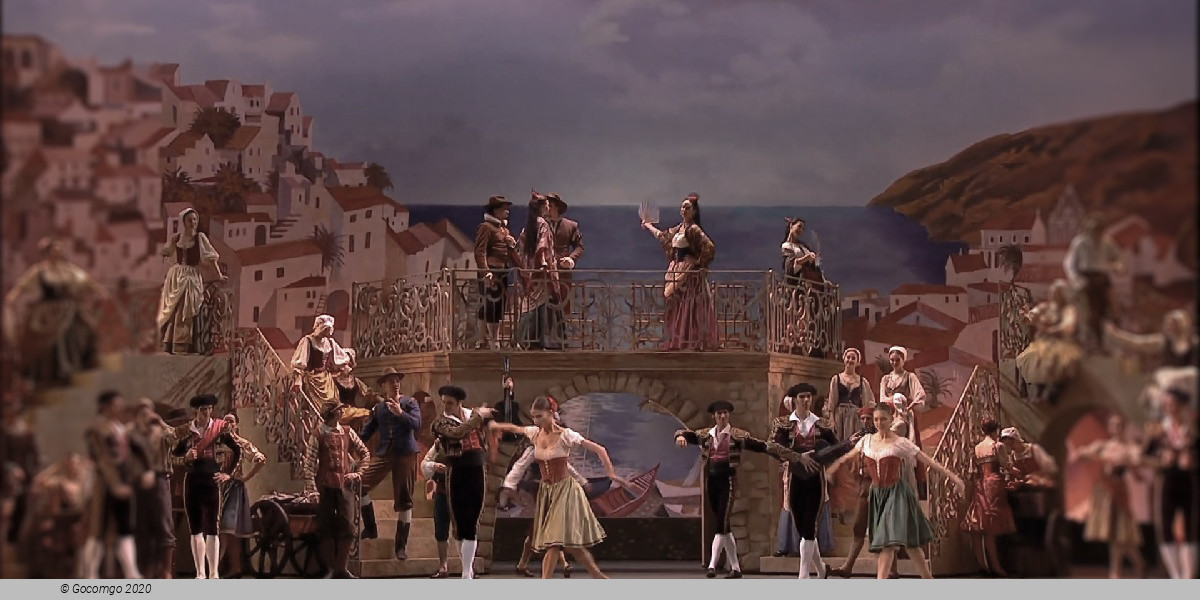
 Teatralnaya Square 1
Teatralnaya Square 1